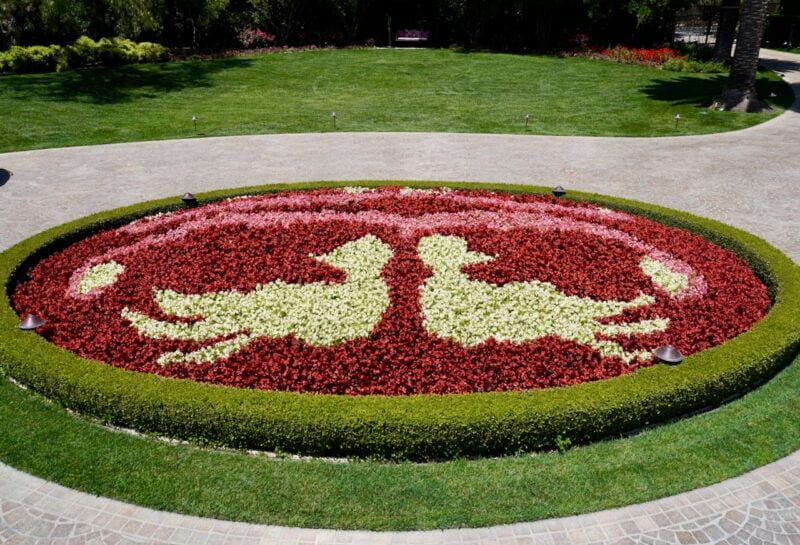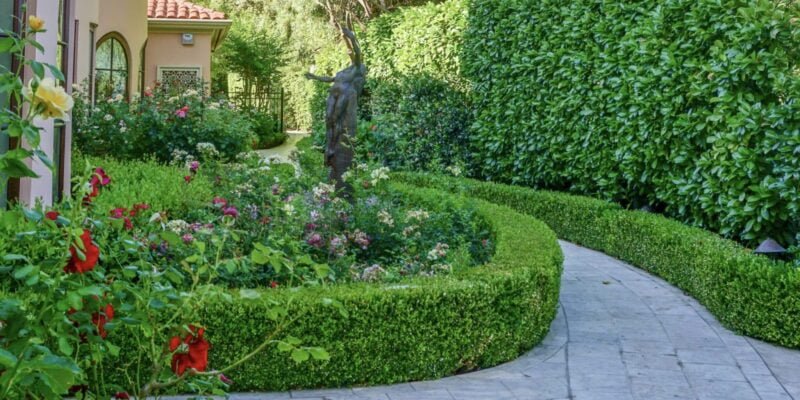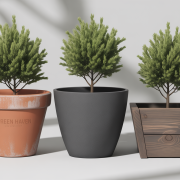The Bay Area is renowned for its diverse landscapes, from coastal beauty to lush hills and vibrant urban centers. Amidst this natural splendor, estate owners are turning to a centuries-old art form to add a touch of luxury and elegance to their outdoor spaces. This art form is topiary, and it’s not merely gardening; it’s sculpting with plants. In this comprehensive guide, we delve into the world of topiary and how it’s shaping Bay Area landscape design, redefining the art of estate landscaping.
I. The Art of Topiary

Topiary Defined: Topiary is the art of training and sculpting live plants, typically evergreens, into intricate and ornamental shapes. These living sculptures range from geometric forms to whimsical figures, and they bring a sense of artistry to landscaping.
II. The Elegance of Topiary
Topiary offers a unique elegance to Bay Area estate landscaping that sets it apart from traditional garden design. Here’s how topiary adds a touch of sophistication:
1. Architectural Precision: Topiary’s sculpted forms resemble architectural details. Symmetrical cones, globes, and spirals can be used to create a sense of order and balance in the landscape, mirroring the luxury and elegance of estate living.
2. Visual Focal Points: Topiary sculptures often serve as focal points, drawing the eye and attention to specific areas of the estate. A well-placed topiary piece can elevate the visual interest of a garden.
3. Dynamic Versatility: Topiary isn’t limited to specific forms. Bay Area estate owners are exploring various designs, from classical European shapes to unique, contemporary interpretations that suit their individual tastes and estate styles.
III. The Process of Topiary
Achieving topiary excellence requires patience, knowledge, and the right approach:
1. Plant Selection: Certain plants, like boxwood, yew, and rosemary, are ideal for topiary due to their ability to withstand pruning and shaping. Bay Area climate considerations play a crucial role in plant selection.
2. Pruning and Training: The key to topiary is careful pruning and training. It involves meticulous trimming to maintain the desired shape and form. Regular maintenance is essential to preserving the integrity of the design.
3. Healthy Soil and Feeding: To ensure optimal growth and appearance, topiary plants require healthy soil, regular feeding, and proper hydration. The Bay Area’s varied microclimates necessitate attention to local soil conditions.
IV. Topiary Styles for Bay Area Estates
Bay Area estate owners have embraced a range of topiary styles to suit their preferences and surroundings:
1. Classical European: Traditional topiary forms like cones, pyramids, and spirals offer a touch of timeless elegance, creating a sense of grandeur and sophistication.
2. Whimsical Figures: Some estates opt for whimsical and imaginative shapes, like animals, abstract designs, or figures that add a sense of playfulness and uniqueness to the landscape.
3. Modern Minimalism: In some cases, simplicity reigns. Clean lines and geometric shapes contribute to a minimalist and contemporary aesthetic, often favored by modernist estates.
V. Luxury Landscape Design with Topiary
Topiary extends beyond mere plant shaping; it’s an integral part of luxury landscape design. Bay Area estate owners use topiary to elevate their landscapes:

1. Garden Layout and Symmetry: Topiary’s structured forms can guide the layout of gardens and contribute to the symmetry and orderliness of the landscape.
2. Artful Garden Borders: Estate owners use topiary to create beautifully sculpted hedges that serve as artful borders, framing garden spaces elegantly.
3. Privacy Screens: Topiary hedges provide functional privacy screens, separating outdoor spaces and adding a sense of intimacy to estate gardens.
4. Integrating Water Features: Topiary pieces are often paired with water features like fountains or reflecting pools, creating harmonious garden compositions.
VI. The Ongoing Art of Topiary
Bay Area estate owners recognize that topiary is an ongoing artistic endeavor. It requires regular maintenance, including pruning and shaping. Professional landscape maintenance services are often employed to ensure that these living sculptures continue to enhance the estate’s beauty.
In the Bay Area, topiary is a symbol of luxury, an art form that shapes outdoor spaces with elegance and precision. It’s a testament to the harmonious relationship between estate landscaping, luxury living, and the natural world. As topiary gardens continue to flourish, they redefine the very essence of estate design, blending artistry and the aesthetics of living landscapes in the heart of the Bay Area.













Comments